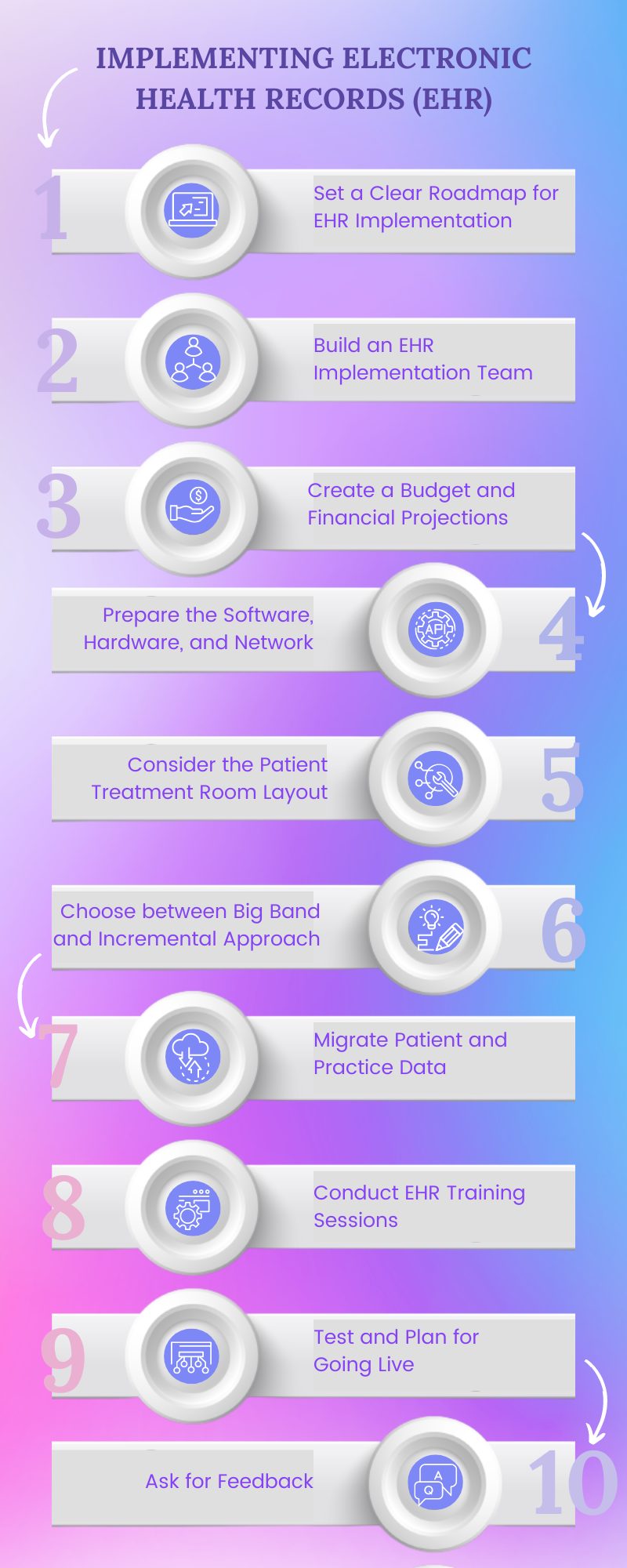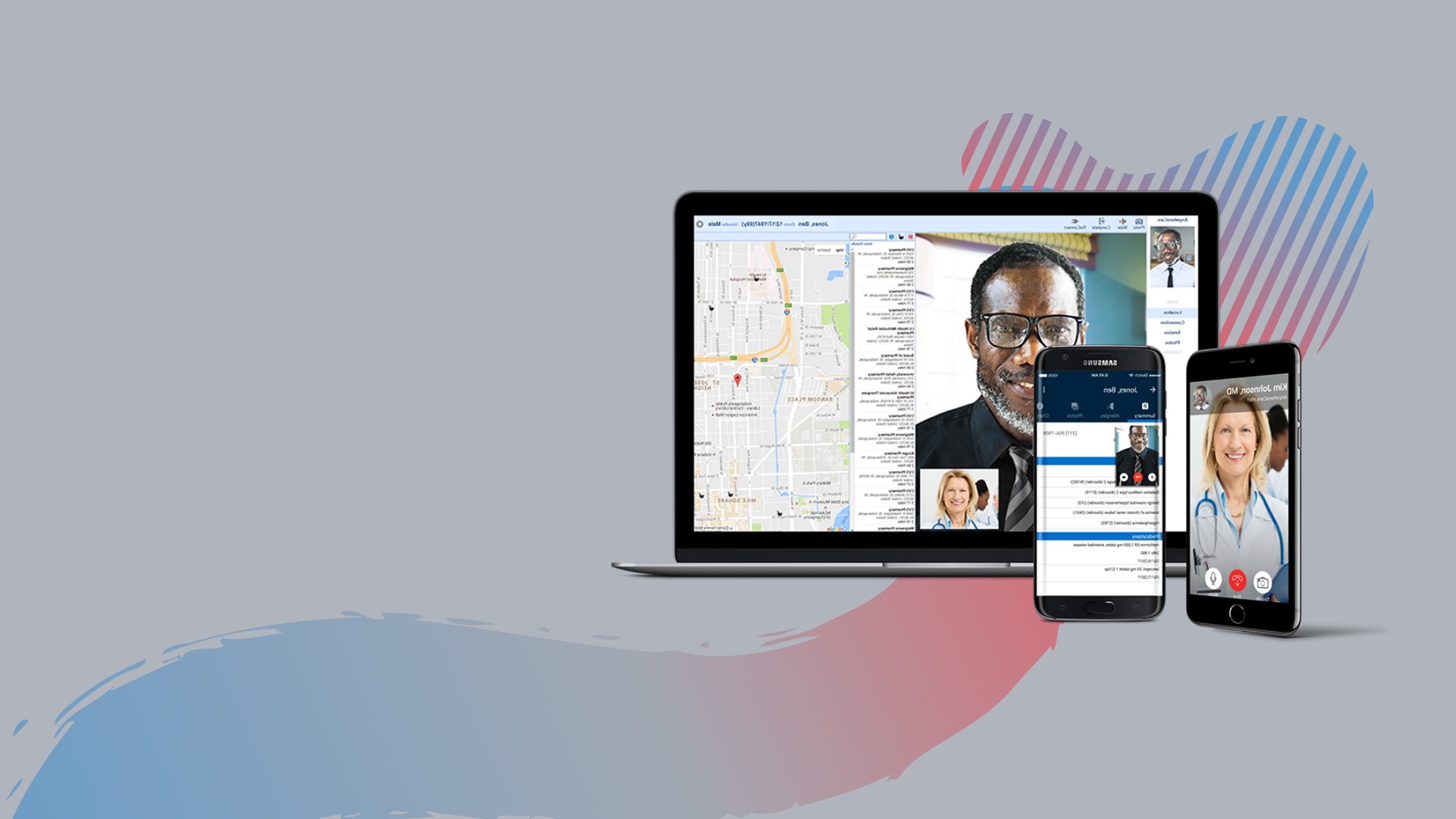The rate at which the world has gone digital is both wonderful and alarming. The mechanization of goods far surpasses what we anticipated just a couple of decades ago. Cassette tapes have made way for Spotify and YouTube, while typewriters have vanished into the ever-growing tangle of word processors. Even your groceries can now be delivered to your house with the press of a button.
Given how our life has been so securely fastened to the cutting edge of technology, it only makes sense that this wave of digitalization should hit all the major and important sectors necessary for survival. The main beneficiary of this change has been the healthcare department, and rapid changes in healthcare application development are a testament to that.
What Is EHR and What Makes It Important?
EHR stands for Electronic Health Record. Remember how, back in the day, you had to keep all your medical records in a single folder or file? You would have to carry it everywhere and keep it updated, keeping track of every single loose leaf of paper. Well, an EHR does that very thing, except it keeps it all in digital storage.
For clinics the world over, there could not be a bigger blessing. No longer do they have to invest in physical space – cabinets, closets, whole rooms – to store medical records of all their patients. By simply updating their computer system, they can store millions of patients’ worth of data.
This makes retrieval a cinch, too. EHR software comes equipped with find and search functions to easily find the records you want, forever eliminating the need to sift through stacks upon stacks of records in search of the one you need.
Due to these benefits, clinicians can spend more time and energy actually treating their patients. This change has been sweeping, and this has made EHR an indispensable part of modern healthcare systems. However, this does not mean that the change has been smooth. The reality is anything but.
Humans have a hard time adapting to and accepting change, and in this article, we will highlight the various challenges of implementing an EHR system in the healthcare department.
High Cost of Implementation
This is a no-brainer. A new, wide-reaching system is always costly to implement on all levels, and this one is no different. In most cases, there are five steps to initiating an EHR system, which are hardware setup, software installation, assistance for implementation, training costs for staff, and network fees.
Of course, that was without taking into account other hidden costs like maintenance and repairs. All of this combined, the cost of purchasing and implementing an EHR software system can range between $15,000 and $70,000, making it the foremost among EHR implementation challenges.
Reluctance Among Staff
Another issue with EHR implementation is reluctance among staff members to use it. You have to realize that many people derived their livelihood from maintaining, filing, and searching through physical documentation. EHR software continues the trend of technology taking over jobs from people, thus making it unpopular.
Combined with this is the fact that many people do not trust technology. They doubt that technology can ever do what people did, and their doubt leads to them not giving up physical documentation. What this does is slow down the implementation process because they refuse to learn the ins and outs of the software.
Training Is Labor-Intensive
Adding to the previous point, for the staff who do take to the software, training to learn how it works can be very hard to learn. It requires staff and management to put in extra hours on top of their regular duties to learn about software that is probably alien to them.
Because it can be so labor-intensive, many among the staff can think of the training as unnecessary. For clinics on the smaller side, putting extra hours into training might mean taking hours away from actual work. This may lead to loss of business, and nobody wants that to happen. Nobody wants to lose money, and that leads many to forsake their training in favor of actual work , resulting in major EHR implementation challenges.
Lack of Customization
One of the major challenges of implementing an EHR system is its lack of customization. EHR software has not been around for a very long time, meaning it does not have different versions for different purposes. And this creates a big problem because the needs of an ophthalmologist are very different from a pediatrician. So, as you can imagine, the “one size fits all” approach is very difficult to use, making the software unviable in many cases.
A better design is required before EHR software becomes universally accepted in clinics across the globe. Otherwise, this will forever cause EHR implementation issues.
Privacy Concerns for Patients’ Medical Information
Privacy is a big cause of EHR implementation issues for netizens, and with good reason, too. Cyber attacks and hacks are prevalent these days, and if sensitive medical information is leaked in such an event – or even by natural disasters like earthquakes – it seriously discredits the legitimacy of the software.
Not only that, but in the event of data theft and breach of security, patients might sue the clinic, and legal costs could bleed them completely dry. It is a hazard worth considering and one of the major roadblocks towards proper EHR integration in daily life.
Transferring Data From Physical to Digital
One of the first parts of integrating EHR is to transfer physical data to digital files. The transference will always be tedious because there will be a huge amount of physical data to be converted, which promises to be abysmally time-consuming. This makes it one of the most annoying problems with implementing EHR.
An added risk is the probability of transcription errors. Given the huge volume of material, the probability of making mistakes increases manifold, which makes finding files a nightmare. Plus, mistakes result in extra time spent fixing it all, which takes even more time and effort.
New Investments in Technical Management
With EHR comes a plethora of new expenses that were not required for physical record keeping. Main among this is an in-house technical team to keep the software working properly. They come in handy for troubleshooting because the regular staff will not be equipped to deal with anomalies in the software.
But this comes with its own challenges. Housing a technical team or even a professional is going to be new and something the staff is unused to. The newly employed technical staff will also require their own workspace, which the clinic may or may not have. Not only that, these specialists will need their own hardware, which the clinic will have to supply.
For small clinics, this is a significant expenditure and a major cause of problems with EHR implementation.
Cross-Platform Connectivity
There are many different providers of EHR solutions and, for most of them, they are not linked to each other. This is a notable problem for many. Why? Imagine if your clinic stores your information with software A. However, you are referred to a clinic that uses software B. If software A and B cannot share your information, how will your new healthcare givers understand your history and treat you accordingly?
This is a region where EHR providers need better connectivity and communication. Nothing should trump the medical needs of the customers, and everyone else needs to work together to accommodate this or risk it becoming one of the major problems with implementing EHR.
Proper Planning
Most people fail to recognize that implementing EHR in a clinic is not just a technological upgrade but also a complete change in company culture. Therefore, this requires a top-down approach by management to plan for this change.
Without prior planning and buy-in from everyone from staff and management, the implementation of the EHR software is likely to be a catastrophic failure.
Constant Communication With IT
Those who make the decision to use EHR software have to realize that what you get is not what you need to be stuck with. EHR software can do a lot, but it cannot do everything you want. If and when you find a limitation in the software, you should reach out to the IT vendor you got it from. In most cases, the feedback you provide will help change the software for the better.
This is why communication is so important. When you talk, things begin to happen. Just as you want the software to work, the makers of it want the same thing and are looking for your feedback. Only by talking can both your expectations hope to be met.
Conclusion
That was our list of the top ten most common challenges plaguing the implementation of Electronic Health Record software in clinics across the world. By no means is this list an exhaustive one, as there are many, many more problems with implementing EHR in the healthcare system.
That being said, barriers are being broken every day, and in time, EHR is bound to become a staple in health centers everywhere. All it needs is cooler heads to prevail: have some patience and an open mind.
25 February 2021






